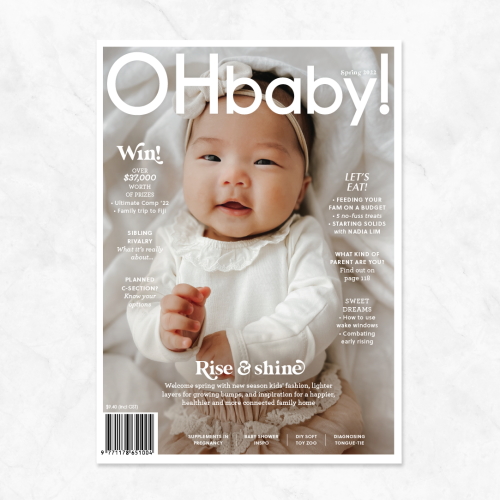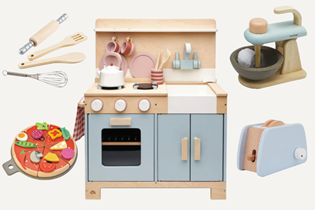How to talk about body parts & more with your kids

Knowing how and when to broach certain subjects with our children can be tricky. Sex therapist, Jo Robertson shares how to talk about bodies, consent, sex & more.
As parents we get the phenomenal (and terrifying) job of helping form our child’s mind. We get to inform their views on the world, themselves, their body, their relationships, their values. Our lens on the world shapes their lens on the world – that is a very sacred privilege. But it’s also a huge responsibility, one that I believe we need to take seriously. Now please don’t get me wrong, I am VERY comfortable with the idea of parents making mistakes, messing it up occasionally, fumbling through a tricky conversation – I stand firmly in the 'good enough' parenting camp.
So, what does this responsibility look like when it comes to talking about bodies, sex, reproduction, and consent with our kids? Get ready, it’s going to get challenging!
LABELLING BODY PARTS
These conversations start from the moment we have the baby when we start labelling their body parts. Most of us were taught funny names for our genitalia – 'foofoo, willie, front bum, fanny, vajayjay, flower, doodle, hoohah, winkie, peepee' and the list goes on. While these words in and of themselves are not bad, it’s the message they send that is confusing. It’s the equivalent of calling their knee a 'foofoo', or their shoulder a 'hoohah'. We don’t do that because we don’t feel uncomfortable saying the names knee and shoulder, and we don’t feel uncomfortable about our kids saying the words knee and shoulder.
When we mislabel a body part we send a confusing message to our kids – that these parts are a bit funny, that we are a bit embarrassed to talk about them, and there’s something potentially shameful about all of it.
The good news is it only takes one generation to change this! When we correctly label a body part our kids don’t know any different and they go on for the rest of their lives to call it the accurate term, and as a result their children learn how to say it correctly too. At some point we must choose – will we take responsibility for changing social norms, or will we leave it to them with their kids?
It seems to be that currently adults are more comfortable saying the word ‘penis’, but ‘vulva’ still feels too scary. This is deeply confusing for our girls – that their body part is the one that’s the weirdest or strangest to talk about. As a sex therapist, I see far too many women who are ashamed of their genitalia, feeling that it is somewhat gross and undesirable. Any feminist scholars will also tell you that the reason vagina made it to the top of the list when naming bits, instead of vulva, was because the vagina is the reproductive part – the rest of the female genitalia held less importance to society. Is this a historical message we want to continue, that the entirety of a female’s genital anatomy is reduced to only the reproductive part?
So, what’s the script? Well with my three boys I say “I have a vulva, but some people call it a vagina. It’s not a vagina, that’s just the part where a baby can come out. Everything you see is called the vulva, the vagina is inside, and you can’t see that part”. I give them both words because I know at school kids (and adults) will probably call it a vagina and I want them to understand what’s going on. Explaining penises I say “It’s called a penis, and these are the testes which some people also call balls because they look a little bit like balls”.
CONSENT
Consent is a big topic, especially now with the #metoo movement highlighting this. Adults globally are looking up from the headlines and saying, “How do we do this differently?” and “What do we need to teach kids to prevent this abuse from happening?”. We can be so grateful to this movement for sparking these questions and overall leading us to a healthier cultural space. So, what can we do differently with our
little ones?
Firstly, use the word consent in conversations. What we know is that consistent messaging is more effective, so if they have a parent, a grandparent, and a teacher all talk about the same issues then they are more likely to adopt the message. In our house we say everyone has their own ‘bubble’, which the pandemic has now made a household term. We have told the kids from when they were babies, “Everyone has a bubble around them – mummy has a bubble, daddy has a bubble, you have a bubble, your brothers have bubbles. And when we want to go inside someone else’s bubble we should ask them. That’s called asking for consent”.
Real life however, shows that there are instances where we don’t ask, for example we don’t ask to hug our partners, we don’t ask to change our kids’ nappies, and we don’t ask if we can vaccinate them against polio. So, there’s nuance here, it’s not clean cut but the more we can insert consent or ‘bubble’ language the more they pick up that other bodies are not theirs for consumption, that respect and care are always essential elements of touch.
Unfortunately, children are very forgetful, so teaching these concepts regularly is essential. If your child crosses a touch boundary by touching a sibling’s genitals for example, it’s important we don’t shame or punish them for this. They are likely just trying to learn and are responding to their curiosity. We can navigate this by celebrating their curious mind, answering questions they have about bodies, and teaching them about consent. Childhood body exploration of themselves and others is a very normal part of development and shaming them for this can lead to long-term problems.
If your child does something you find deeply concerning or you are worried they aren’t changing their behaviour, then reach out to a parent coach or a family therapist about next steps. You can also put a few extra boundaries in place like baths without siblings and limiting nudity around the home. Finding a child-centred book that offers examples of safe and unsafe touch will help you immensely in your parenting journey, see book list info below.
REPRODUCTION
The next topic that parents often find challenging to talk about (which is totally understandable) is reproduction – and those questions can start firing at you much earlier than you think!
I’m a believer in following the lead of your child but having some ages in mind when you want certain conversations to be had by is helpful.
For example your child is likely to have some education at school around body parts and consent so it’s important that they know accurate terms and have some knowledge about what to do with unwanted touch by five. It’s ideal for our kids to be prepped well for what they will hear in school, it gives them confidence in the classroom, and they are less likely to feel overwhelmed by the topic. I recently gave the girls at our local primary school their ‘puberty talk’, and it was visible which children felt prepared for that discussion. I’ve written a list of the ideal ages below for various topics, in an extremely condensed fashion.
AGE AND STAGE
+ By age 4: accurate body part terminology, consent, inappropriate touch and saying “No”.
+ Between ages 3-7: reproduction, 'how a baby is made' without the intercourse part, unless you and your child feel comfortable with that.
+ Age 7-9: puberty and intercourse. Key messages for intercourse are – it’s adult behaviour, it’s to show love/care for someone, it needs consent, should feel nice, and both people should always feel safe. You may not get all those key messages out in one time, but you can say something like, “Sex is something adults do when they really love the other person, it’s important it only ever happens when both people want it, it feels nice, and they are both looking after each other and being safe”. This intercourse chat usually goes together with the puberty talk, but you can attempt to separate them if you want.
+ By 10: porn talk for boys, as well as sexuality and gender diverse youth.
+ By 12: porn talk for girls. For information on the porn chat see thelightproject.co.nz/whanau/talking-with-children/.
RESOURCES
I have a list of books on my website, jorobertson.org that I strongly recommend for each of these stages. Using a book is fantastic because you can go back to it regularly when questions come up, and they can find the books in the house if they ever get curious and want to refresh their memory on how things work. Beware of where you are leaving books if you have younger children or friends over on playdates, or you may end up having a tricky conversation!
For a long time, we have referenced the problematic umbrella term 'the sex talk' or 'the birds and bees talk' (what the heck do birds have to do with anything?!).
This once-off solo talk concept has not served us as a society – conversations about consent, bodies, media, porn, and sex need to happen frequently over the years of a young person’s life.
Every time we raise the conversation, even if our child offers no verbal response, it communicates to them that we are open, aware of the issues they are facing, and they can reach out to us if they need it. And my final reminder: it's meant to be a dialogue, not a monologue. Whilst lectures are okay in university, they aren’t okay with our kids... let's create a family culture where they can express their views, ask questions, challenge our ideas (scary), and be an active participant in our relationship with them.
Jo Robertson is a sex therapist helping parents with sexuality, porn and consent, as well as working with couples on restoring intimacy, or with problematic sexual behaviours. Jo is currently somewhere sunny on a sailing sabbatical with her three boys, and husband Dave. See more at jorobertson.org or on Instagram @sextherapistjo.

AS FEATURED IN ISSUE 59 OF OHbaby! MAGAZINE. CHECK OUT OTHER ARTICLES IN THIS ISSUE BELOW

















